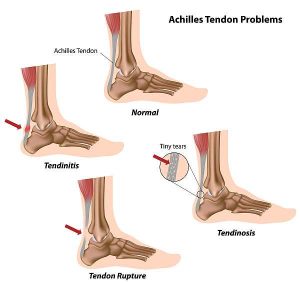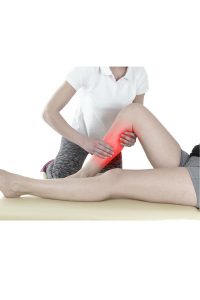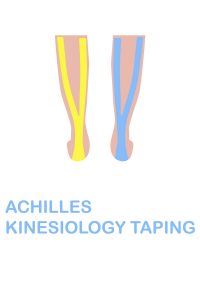Heel Pain is devastating and can lead you to disability. It can stop you from standing on your feet and from walking and running. You have to undergo tremendous amounts of pain for taking just a few steps. It can take away your dreams and the freedom that our feet give. Even more saddening, if you think you’ve tried everything possible but the pain in the heel still won’t go away.
If you are going through such situation, I am sure you are frustrated and desperately after the answer to getting rid of the pain.
In this post, you will learn how we have helped thousands of patients get rid of Common heel conditions.
Faye Pattison Physiotherapy is an established Physiotherapy and Healthcare clinic based in Chelmsford Essex with a team of experts to give you the correct diagnosis and more importantly, the right treatment to get rid of that pain!

What are common heel conditions?
1. Plantar Fasciitis
This is one of the most common causes of heel pain. Plantar Fascia is a white flat of tissue that connects your heel to the toes.
The micro-injury that occurs from the strain, repetitive usage, poor biomechanics and fatigue and sports injuries can all lead to inflammation and swelling of the plantar fascia causing pain on the heel. And it is known as Plantar Fasciitis. Read more on this subject here in our Plantar Fasciitis blog.
2. Achilles Tendonitis
Tendons connect muscles to the bone. The Achilles tendon is the strongest tendon in the human body, and it connects the calf muscles to the heel bone (Calcaneus).
Inflammation of the Achilles tendon is known as Achilles tendonitis, and it causes pain in the insertion area of the tendon which is on the heel. Learn more about Achilles tendonitis here.
3. Heel Spurs
Due to inflammation and injury to the surrounding tissues of the heel, it leads to the pointed bony growth of the heel bone (Calcaneus Bone).
The bony growth then impinges and puts pressure on the surrounding tissues that cause extreme pain, especially while walking on toes.
4. Calcaneal Bursitis
Bursa is thin layers of lubricated protective cushion that counters the friction of the bones with the surrounding tissues. The Calcaneal Bursa is located on the heel bone.
Repetitive ankle movements, contusion, micro-injuries and repetitive microstrains cause inflammation of the Bursa and are known as Calcaneal Bursitis.
Management with Faye Pattison Physiotherapy
At our Chelmsford clinic, we manage heel pain in a variety of ways depending on your diagnosis.

Short-Term Management
In this phase, we focus mainly on pain management. We use the following modalities to help alleviate the pain.
1. Soft Tissue Therapy – A use of varius techniques to help relax the tensed soft tissues of the heel and the muscles imbalances caused by tight, short, and tensed muscles.
2. Cryotherapy – Advise on the use of ice to instantly lower the inflammation of the soft tissues that are causing heel pain.
3. Rest – Cutting down the activity that is injuring the heel is important, we advise you how long to rest to help speed up pain relief.
4. Taping – Taping may be used to restrict the range of the ankle to avoid further injury to the soft tissue and also to support the injured soft tissues, such as ligaments and muscles.

5. Acupuncture – Acupuncture helps in stimulating the heeling response to decrease inflammation in the tissues therefore decrease pain and speed up the recovery time.
Long-Term Management
In this phase, we work to treat the cause and to prevent a future episode.
1. Stretching exercises – Fully elastic muscles fibers are essential to perform better and pain-free activity. Especially your Achilles tendon to carry you on your Feet. With correct stretching exercises that we at Faye Pattison Physiotherapy prescribe, you can gain the full function of your soft tissues.
With this, you can help prevent future heel pain episodes.
2. Strengthening exercises – Strengthens any weakened muscles and surrounding soft tissues so that they can support and hold the heel structures properly.
3. Soft Tissue Manipulation – It softens the hardened soft tissue that causes heel pain. Soft tissue manipulation especially benefits Plantar Fasciitis link to blog, where the fascia becomes tight and hard. It also increases the circulation of the heel for a speedy recovery.
4. Orthotics / Insoles – There is no use in just purchasing an off the shelf orthotic! Our Orthotics manufactured in the UK by the leading company are bespoke and fully customised to your unique feet to put the foot into the correct position allowing the muscles and soft tissues to work more biomechanically normal and more efficiently to reduce the pressure exerted on the heel which in turn will help align the knees, hips and shoulders. We take a full scan of your feet to prescribe the correct orthotics accordingly to your needs.

5. Improving Techniques for performing activities – Poor technique along with poor biomechanics is one of the leading causes of heel pain, especially among a sports person. We assess your activities, such as your walking, jumping, running or landing techniques. After carefully assessing with our well-trained therapist such as a physiotherapist, we can teach you the correct technique for performing your activities.
Conclusion
Heel pain is painful and can cause extreme difficulty in performing daily activities in life. But don’t worry, contact us now on 01245 690520 or book an appointment online and get the answers and expert treatment you need to relieve your heel pain.
We are a hands on team of therapists and provide all kinds of the best, proven treatment that actually works!!





